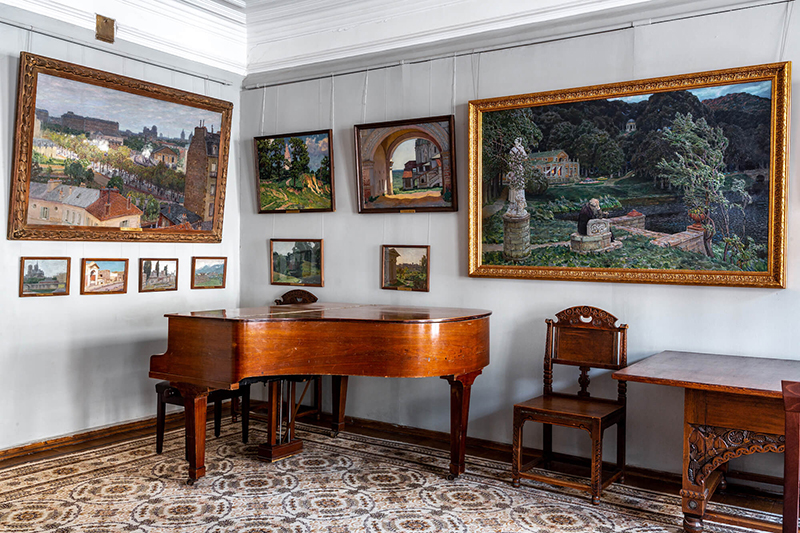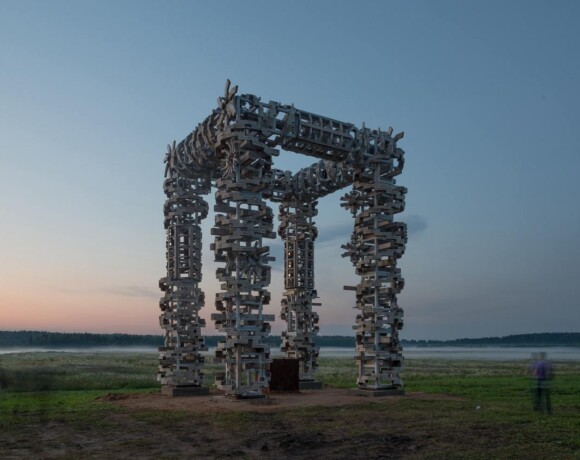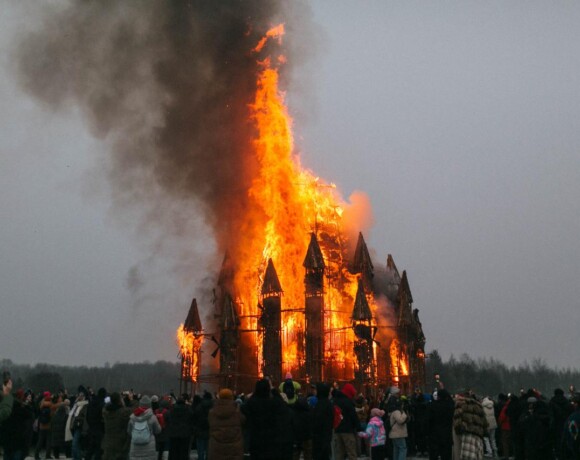To visit the apartment of a cultural figure of the last century is like being transported to that era by a time machine. Creaky floors, recreated interiors in detail, preserved things. The smells. The feeling of touching the personal. You can imagine yourself as the hero of the movie “Midnight in Paris” and find yourself in the past, but to wander not through the streets of the French capital, but to visit the Moscow apartment of a person whose biography you have read, whose work you know and have seen, however whom you have never met during your life.
Версия на русском языке тут
Maya Plisetskaya’s Apartment Museum
📍 Moscow, Tverskaya street, 25/9, apt 31
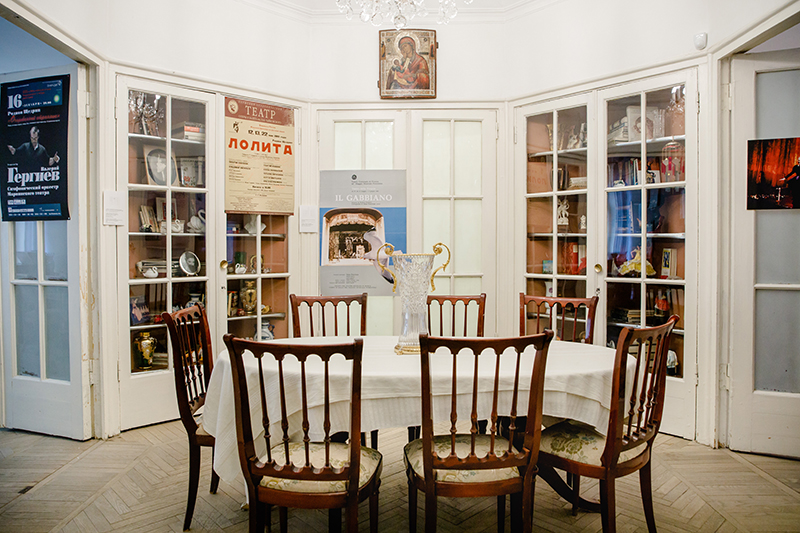
You can get into a three-room memorial apartment in a house on the corner of Tverskaya Street and Mamonovsky Lane as part of an excursion group with 8 persons max. Now the room belongs to the Theater Museum named after A.A. Bakhrushin, and in the summer 2022 the apartment has been opened to visitors.
Maya Plisetskaya and Rodion Shchedrin purchased this apartment in 1963 and lived here until 1991, and even after moving to Munich, they stayed in this apartment during Moscow visits. The furniture and interior are preserved in detail the way they were during Plisetskaya’s lifetime.
The house of the legendary ballerina is full of interesting exhibits: photos of the hosts, dresses and hats by Pierre Cardin, carpets by the French avant-garde artist Fernand Leger, portraits of Maya Plisetskaya by famous artists, stage costumes and lithographs by Marc Chagall.
Svyatoslav Richter Memorial apartment
📍 Moscow, Bolshaya Bronnaya street, 2/6, apt 58
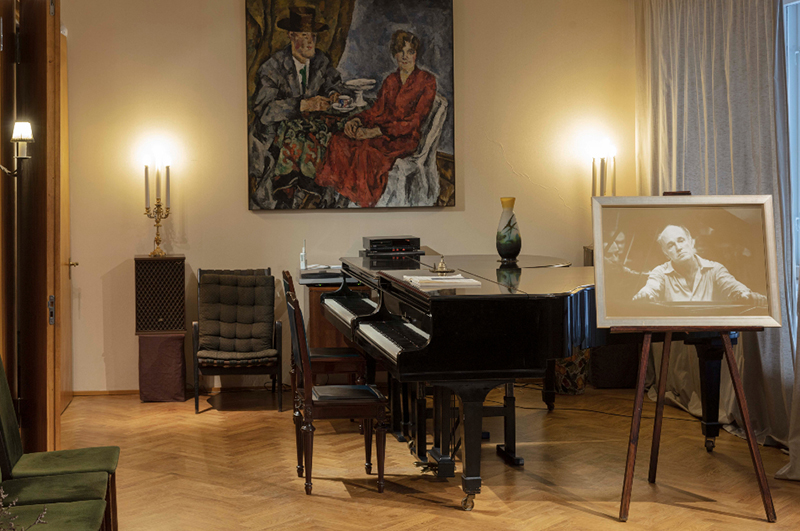
On the sixteenth floor in the house on Bolshaya Bronnaya Street there is a museum of one of the greatest pianists of the XX century — Svyatoslav Richter. In the 1970s, Svyatoslav Richter and Nina Dorliak moved into two apartments on the 16th—last floor— and merged them. Now this quite a big place is a department of the Pushkin State Museum of Fine Arts according to the will of the musician.
Svyatoslav Richter and Nina Dorliak have never been officially married, which is why they got two apartments, not one. In the place, even before the entering of the famous couple, redevelopment was done. The floor was reinforced for better sound insulation, and the ceilings in the largest rooms were raised due to the attic space. There are two Steinway & Sons grand pianos in the living room. Some of the furniture has been lost, but in the preserved interior of the apartment you can find real works of art: works by Falk, Bakst, Kokoschka and others.
Concerts are now being held in the memorial apartment.
Apartment of Gleb Krzhizhanovsky
📍 Moscow, Sadovnicheskaya street, 30, building 1
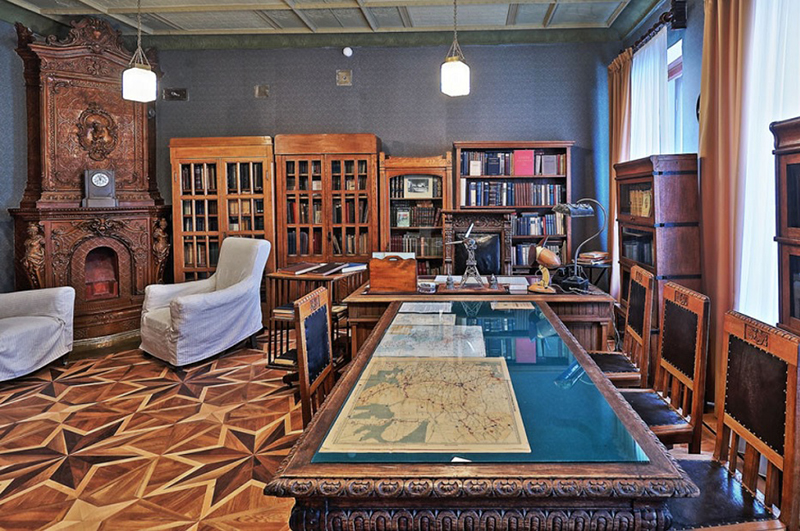
A unique memorial apartment in Zamoskvorechye on Baltschug Island has preserved in great detail the atmosphere of the early 20s. Vladimir Lenin, the closest friend of Gleb Krzhizhanovsky, used to come here to visit him, and it was in this apartment where the commission for the electrification of the country took place. It was here where Gleb Krzhizhanovsky wrote the entire GOELRO plan — the state plan for the development of the electric power industry in Soviet Russia.
Gleb Maximilianovich Krzhizhanovsky is an outstanding Soviet energy scientist. The owner of this appartment loved his home, valued it and remained in this house until death, even though he had opportunity to get a much more comfortable and larger place.
The house where the apartment is located was built in the early 19th century immediately after the end of the Patriotic War. In 1904 it was rebuilt in the Art Nouveau style and was used for rent. At the beginning of the XX century, Gleb Krzhizhanovsky worked here as a process engineer, and later settled in this apartment. Now all the interiors of five rooms and an entrance hall are completely preserved as museum.
Apollinary Vasnetsov Memorial Museum
📍 Moscow, Furmanny lane, 6, 3rd floor, apt 21-22
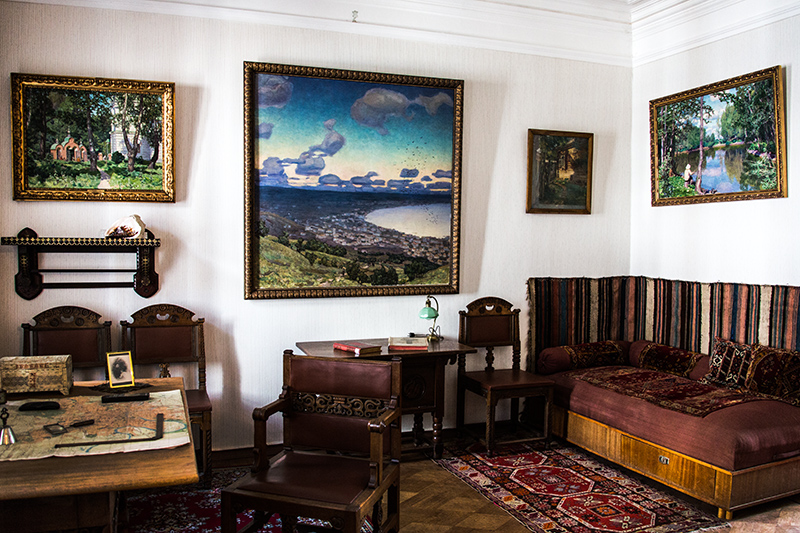
Apollinariy Mikhailovich Vasnetsov is a Russian artist, scientist and poet, master of historical painting, art critic, researcher of the history of Moscow and the younger brother of the artist Viktor Vasnetsov.
Apollinary Mikhailovich Vasnetsov lived in this apartment with his wife and son for 30 years — from 1903 to 1933, until death. The building itself was built at the beginning of the XX century, and the house was used for rent, and after the revolution of 1917 the apartments were divided into communal apartments. The idea of creating a Vasnetsov apartment museum appeared in 1965 thanks to the artist’s son and his wife. Those at that moment lived in a communal apartment, formed in the former rooms of Appolinary Vasnetsov. Then the tenants were resettled, the place was repaired, the Vasnetsovs lived in two small rooms, and memorial halls were created in the other three large rooms. Later, the rooms of the neighboring apartment were also allocated to the museum. Now the Vasnetsov House Museum is part of the State Tretyakov Gallery.
The restored apartment conveys the atmosphere of life of two eras: before and after the revolution of 1917. At the beginning of the XX century, the Vasnetsov house was a kind of center of cultural intelligentsia. Artists, scientists, musicians visited creative evenings and friendly meetings held here: Fyodor Chaliapin, Vasily Polenov, Mikhail Nesterov, Ivan Bunin, Vladimir Gilyarovsky, Konstantin Korovin, Kliment Timiryazev and others.
Around 200 paintings surrounding the artist’s family have been preserved in the apartment. Furniture, books, easels, sketchbooks with paints and brushes, tools, autolithographs and drawings – everything is as it was during the painter’s lifetime.
House-Museum of Maria Ermolova
📍 Moscow, Tverskoy boulevard, 11
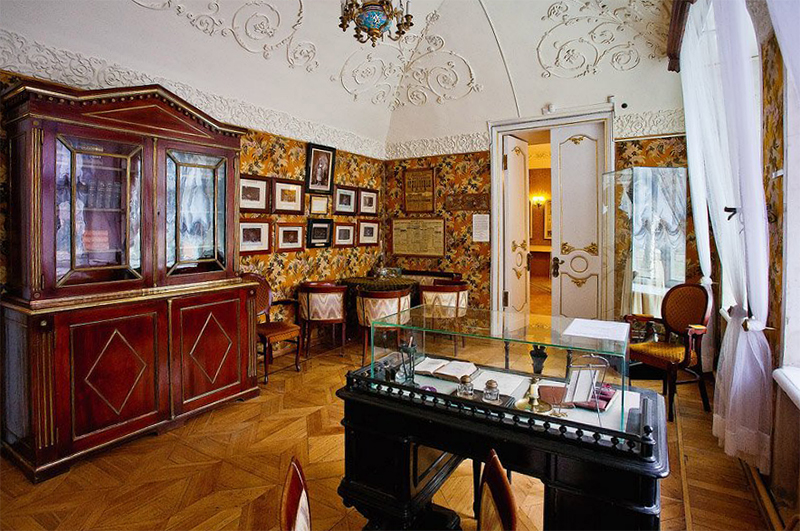
Here it`s not even an apartment, but literally a three–storey, luxurious house bought by the actress’ husband Nikolay Shubinsky back in 1889. But in 1917, her husband emigrated, the actress stayed in Russia, and her family had to move to the upper floor, while the rest were occupied by new residents, here Maria Ermolova arranged a hospital for the wounded. In 1920, the mansion was transferred to the actress in full lifetime ownership for her services in the Russian theater.
Now the personal belongings of the actress are presented in the house-museum, the interiors of the times of her life are recreated. In the exhibition you can see posters of performances, unique photographs and costumes, paintings. Ermolova’s house is also a theater salon: concerts and performances, creative meetings are held in the white hall of the building.
Museum Center “Moscow House of Dostoevsky”
📍 Moscow, Dostoevskaya street, 2
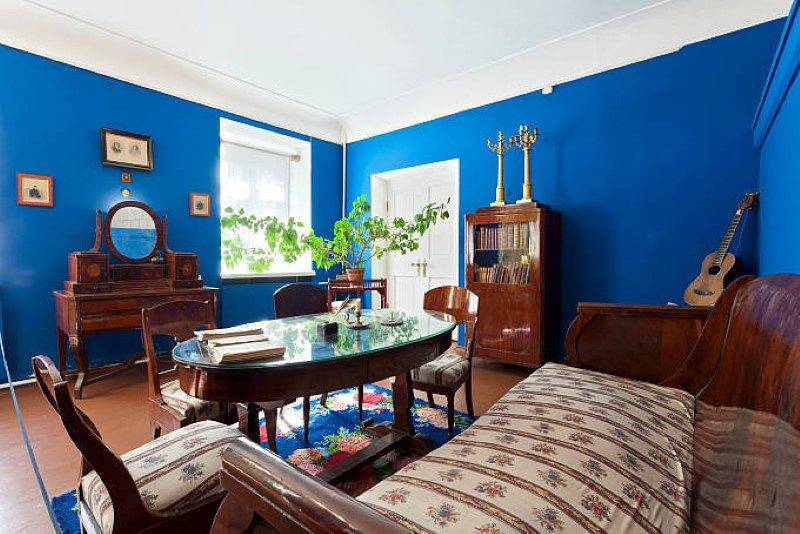
House-Museum of Feodor Chaliapin
📍 Moscow, Novinsky boulevard, 25-27, 3/5
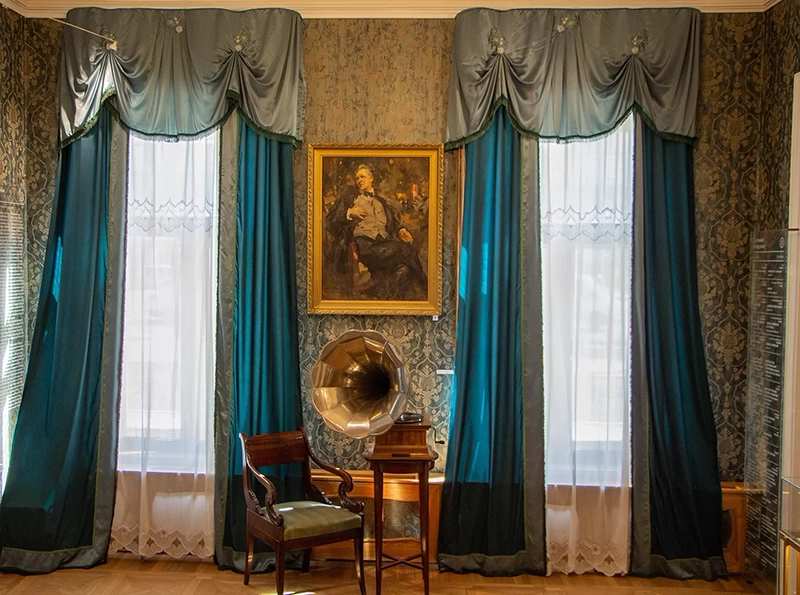
This is the first private Moscow house of Fyodor Chaliapin. The famous bass singer lived here from 1910 to 1922, and since 1988 the estate has become a museum and a branch of the Russian National Museum of Music.
The estate was built in the 1790s, survived the Moscow fire of 1812, and in 1910 it was acquired by Fyodor Mikhailovich Chaliapin. From that moment, the building underwent the most significant changes: from a wooden house with a plaster decor, the structure turned into a European-style mansion with gas, water supply system, bathrooms and a telephone. Maria Ermolova, Maxim Gorky, Valentin Serov, Sergei Rachmaninov, Ivan Bunin and Konstantin Stanislavsky have visited the family over the years.
During the First World War, the Chaliapins organized a hospital for soldiers in the mansion. And in 1918, the building was nationalized, the Chaliapin family occupied several rooms on the second floor, and the rest of the place turned into communal apartments. By 1978, the mansion was in emergency state, the apartments were disbanded, and later even offered to demolish the legendary estate. However, thanks to the initiative of a group of artists, the building was saved. And since 1981, a large-scale restoration has begun not only of the mansion itself, but also of all the interiors.
The house-museum holds a rich collection of personal belongings of the artist, stage costumes, furniture and paintings by outstanding Russian artists: Valentin Serov, Mikhail Vrubel, Vasily Polenov, Konstantin Korovin. And in the garden of the estate there are lilac and jasmine bushes planted during the life of Fyodor Ivanovich.
Chaliapin’s house can be visited not only as part of an excursion group, but also if are a visitor of a concert at the estate. Also, there are museum classes for children.
Konstantin Stanislavsky House Museum
📍 Moscow, Leontievsky lane, 6

The only house-museum of the famous director is located in a mansion in Leontievsky Lane. After the revolution of 1917, unlike many, he was allowed to choose an apartment for himself. Konstantin Stanislavsky’s task was not just to find a place to live: here he planned to conduct classes at the Opera Studio at the Bolshoi Theater, which he managed. The director liked the rooms on the second floor thanks to the halls with high ceilings. Four rooms became residential and three were given to the studio. The director lived in this apartment for the last 17 years of his life — from 1921 to 1938. 10 years after Stanislavsky’s death, a house-museum was opened and became part of the Museum of the Moscow Art Academic Theater.
The building was built in the XVII century, originally there were chambers. During its long history, the house has changed many owners, after the fire of 1812 it was rebuilt in the Empire style, and after the revolution of 1917, the rooms of the building became communal apartments. In 1921, the director and his family moved into the second floor of the house.
Today, the Konstantin Stanislavsky House-museum occupies three floors. The first one contains materials for performances staged by Stanislavsky as well as a collection of books from his family library. On the second floor there are restored living rooms of the Stanislavsky family and the halls of the Opera Studio. The Oneginsky Hall once even hosted the premiere of the opera “Eugene Onegin”. The third floor is dedicated to the work of Konstantin Stanislavsky in the Soviet period.
The house-museum hosts excursions and performances, film screenings, as well as meetings of the literary club.
Memorial house-Museum of Academician Korolev
📍 Moscow, 1st Ostankinskaya street, 28
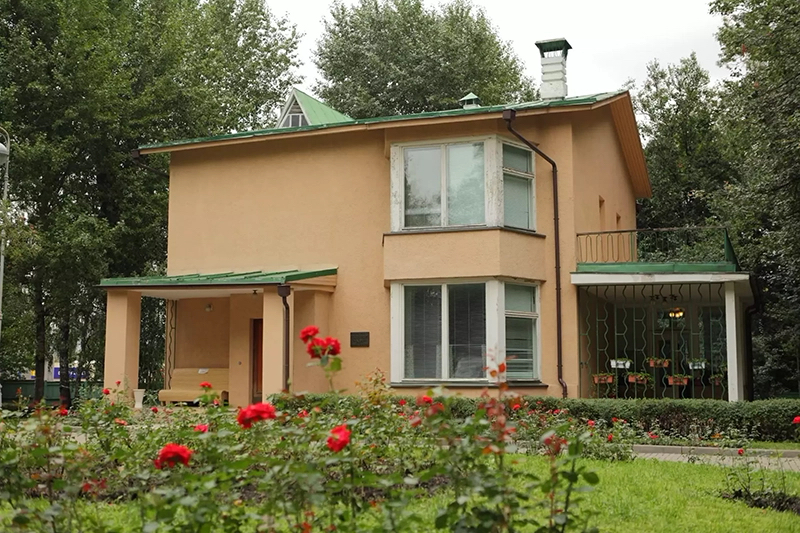
The house-museum of the chief designer of space technology Sergey Pavlovich Korolev is located in a two-story mansion near the VDNKh metro station. This house was built in 1959 and was presented to the academician as a reward for the successful launch of the world’s first artificial Earth satellite on June 4, 1957. He lived in this house from 1959 to 1966, until his death. And in 1972, a museum was founded here.


